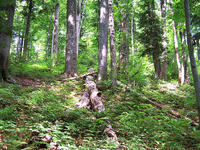You are in: Europe -> Germany -> Primeval Beech Fores... , and traditional search or Image Gallery will yield results of this site only
Primeval Beech Forests of the Carpathians and the Ancient Beech Forests of Germany
| Site number: | 1133 |
|
| Type of site: | Natural | |
| Date: | - | |
| Date of Inscription: | 2011, 2007 | |
| Location: | Europe, Germany, Slovakia and Ukraine | |
Up to 75 images are shown here. Click on each for more details or on Image Gallery for more images.
| Description: |
The Ancient Beech Forests of Germany, represent examples of on-going post-glacial biological and ecological evolution of terrestrial ecosystems and are indispensable to understanding the spread of the Fagus beech in the Northern Hemisphere across a variety of environments. The new inscription represents the addition of five forests totaling 4,391 hectares that are added to the 29,278 hectares of Slovakian and Ukranian beech forests inscribed on the World Heritage List in 2007. The tri-national property is now to be known as the Primeval Beech Forests of the Carpathians and the Ancient Beech Forests of Germany (Slovakia, Ukraine, Germany). --WHMNet paraphrase from the description at WHC Site, where additional information is available. For 360 degree imaging of this site, click here. |
|
| Composing a transnational serial property of ten separate constituents, the Primeval Beech Forests of the Carpathian stretches along a 185 km axis from the Rakhiv Mountains and the Chornohirskyi Range in Ukraine, west alongside the Polonynian Ridge, to the Bukovské Vrchy and Vihorlat Mountains in Slovakia. The ten sites hold perfectly undisturbed, complex temperate forests and demonstrate the most complete and comprehensive ecological patterns and processes of pure European beech covering a range of environmental conditions. The inscribed site contains a priceless genetic beech reservoir and numerous species connected with, and reliant on, these forest habitats. A process which is still ongoing within the site is the wonderful example of the re-colonization and development of terrestrial ecosystems and communities after the last ice age. [Note: This was the modified description in 2007]. --WHMNet paraphrase from the description at WHC Site, where additional information is available. For 360 degree imaging of this site, click here. | ||
| Rights of Image: | www.World-Heritage-Tour.org | |
| Source: | http://whc.unesco.org/en/list/1133 | |
| Reference: | 1. UNESCO World Heritage Center, Site Page. | |






















